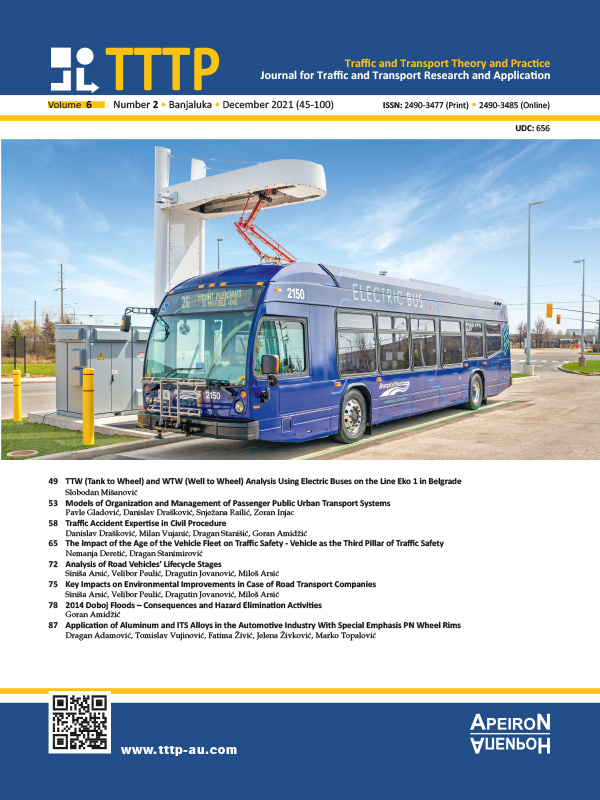Telematics of new vehicles for the purpose of pedestrian safety
DOI:
https://doi.org/10.7251/JTTTP2101035DAbstract
Pedestrians are a vulnerable group of traffic users who most often suffer serious physical injuries in collisions with motor vehicles, which very often have a fatal outcome.
The modern automotive industry is investing great efforts in the development of active and passive protection systems for all traffic participants, including pedestrians.
Pedestrian protection is tried to be achieved by changing the shape of the front parts of the vehicle, by using plastic materials with higher deformation potential which, in collision with the body of the pedestrian, will spend most of the impact energy on its own deformation and thus maximally spare the delicate biological tissue of the pedestrian.
Instead of protruding, rigid metal structures of insignificant elasticity and deformation potential, today’s cars are characterized by appropriate body design, use of high elasticity materials and deformation of contact surfaces, specially shaped and integrated bumpers, elastic and raised bonnet, headlights integrated into the contour of the vehicle front which are capable of absorbing part of the impact energy.
Modern research shows a certain efficiency of these improvements on modern cars. Most of these studies are of the experimental type and are done in strictly controlled conditions on dolls, often commissioned and funded by wealthy automobile corporations, while there is less research in real field conditions.
Recently, experiments have been made with testing the active bonnet, the airbag under the bonnet, and the google model of gluing the pedestrian body.
